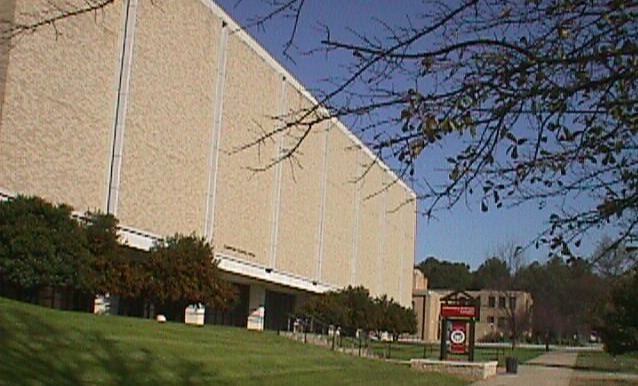
Department of Chemistry
and Physics
 |
Department of Chemistry and Physics |
| CHEM2004 |
Exam 2
|
CHEM2004 Name_________________________
Exam 2 Fall 2009
1. Fill in the blank with the element that bests matches (15 points)
| Group VIIA diatomic liquid | _____________________ |
| Most abundant noble gas on earth | _____________________ |
| Most reactive noble gas | _____________________ |
| Used for making phosphoric acid | _____________________ |
| Blue black solid | _____________________ |
| Used in car batteries | _____________________ |
| Pyrophoric | _____________________ |
| Colorless diatomic gas | _____________________ |
| Neon lights | _____________________ |
| Inert gas used in metallurgy | _____________________ |
| Used to decolorize glass | _____________________ |
| Metallic liquid at room temperature | _____________________ |
| Most reactive metal | _____________________ |
| Cryogen | _____________________ |
| Most reactive nonmetal | _____________________ |
2. Write the prepared for bonding configuration for each element below and tell the number of bonds expected for each: (9 points)
prepared for bonding number of bonds
a) S
b) B
c) Si
3. Match the allotrope with the best structure description: (20 points)
| _____ Gray tin | a. ring structures |
| _____ White phosphorus | b. helical chains |
| _____ Black phosphorus | c. puckered sheets |
| _____ Tellurium | d. planar sheets |
| _____ Stable form of antimony | e. linear chains |
| _____ Red selenium | f. metallic lattice |
| _____ Silicon | g. tetrahedrons |
| _____ Boron | i. icosahedrals |
| _____ White tin | k. diamond structure |
| _____ Germanium |
4. Sulfur melts at 119 oC. When you heat S above 160 oC it creates long chains. Further heating gives S2 and S3. Describe the color of each of these species. (8 points)
| Sulfur | ______________________ | |
| Long sulfur chains | ______________________ | |
| S2 | ______________________ | |
| S3 | ______________________ |
5. Match the property with the allotrope. (10 points)
| _____ layered sheets | A. graphite |
| _____ sp2 hybridized | |
| _____ nanotubes | B. diamond |
| _____ most dense | |
| _____ flakes off easily | C. bucky balls |
| _____ has fused rings | |
| _____ discovered in the mid-1980’s | |
| _____ sp3 hybridized |
6. The element Benjaminium (Bn) has 3 allotropes. Allotrope A has 5 single bonds, allotrope B has 1 single bond and 2 double bonds, and allotrope C has 1 double bond and 1 triple bond. If the sigma bond energy is 200 kJ/ mol and the pi bond energy is 100 kJ/ mol, which allotrope is favored? (show work) (15 points)
7. Circle the correct answer for each of the following questions.
(6 points)
a) The element with the highest ΔH(atomization): C or Si
b) The element with the highest ΔH(atomization): Se or Br
c) The element with the highest ΔH(atomization): Cr or Mo
8. Explain using drawings and M.O. theory, why metals are conductors and nonmetals are insulators. Label all parts. How many bonding M.O.'s do you expect for 1 mole of Cu atoms? (10 points)
9. Choose any 4 of the following and draw the structure. DO NOT answer more than four – this will result in a zero for the question. (8 points)
a) Se8+2 e) As73-
b) Te6+4 f) P4
c) Pb52- g) BN17
d) Sn94- h) S8